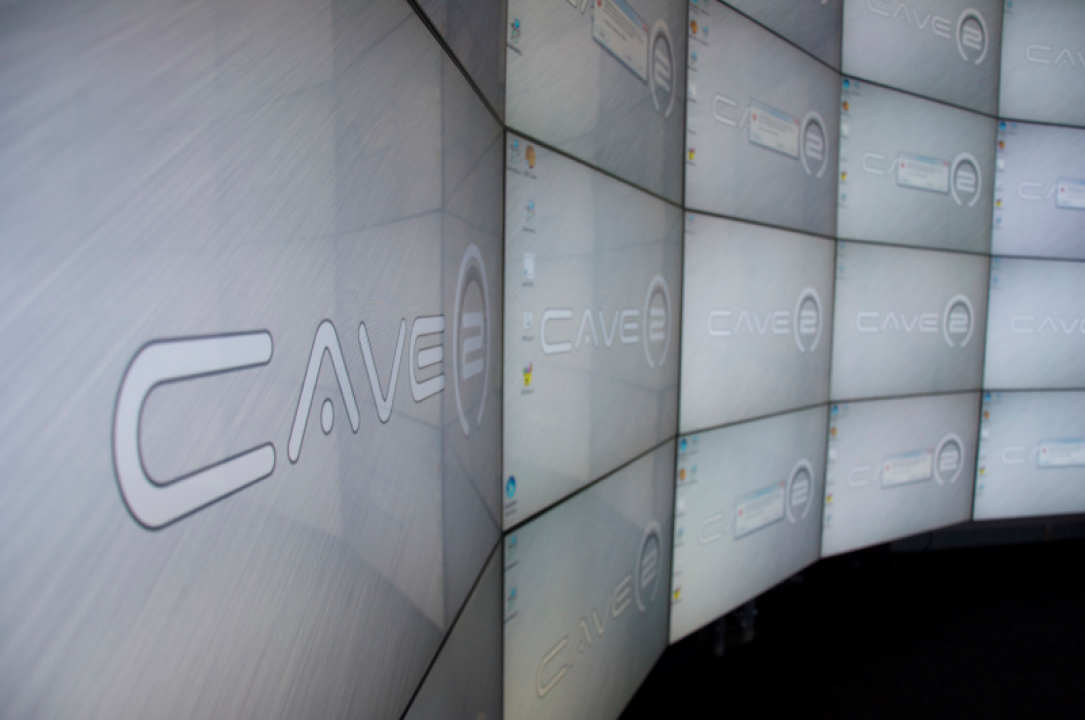|
|
||||||||||||||||||
Virtual reality room brings the brain, Mars and research into CAVE2
URL: http://medillreports.com/2014/11/13/virtual-reality-room-brings-the-brain-mars-and-and-research-into-cave2/#more-3969
University of Illinois at Chicago Electronic Visualization Laboratory EDITOR’S NOTE: Here are excerpts from a recent article by Northwestern University journalism student Michael Epstein on the UIC Electronic Visualization Laboratory (EVL) CAVE2™ Hybrid Reality Environment. Virtual reality room brings the brain, Mars and research into CAVE2 Michael Epstein November 13, 2014 The “CAVE2” hybrid reality environment takes virtual reality from head-mounted devices to virtual reality rooms. The environment is the creation of the Electronic Visualization Laboratory of the University of Illinois at Chicago. The EVL develops hardware and software to enable universities and businesses to assess real-world problems by allowing groups of workers to see and manipulate information in a single digitally enhanced space. Analysts at UIC’s psychiatry department supplied data for a 3-D model that depicts the directional flow of impulses moving across a human brain. Similarly, a model of Mars using data provided by NASA created by an EVL graduate student adapted for the CAVE2 in 2012 allows users to view the topography of the planet the same way a low-flying bird might on Earth. Two years after launch, custom display installer Mechdyne, the lab’s corporate partner that sells and installs CAVE and CAVE2, has just begun to successfully market it to corporations and other universities… two additional CAVE2s have been built since the innovation launched in 2012, one to commercial buyer, another to a university. Creation of a third unit is underway with other proposals in the works. According to Mechdyne consultant and EVL alum Matt Szymanski, the ideal CAVE2 customer is not looking for a pure virtual reality experience, but 3-D capable space for various applications. “The CAVE2’s footprint really allows you to put 12, 15 people in there quite comfortably with chairs and desks, and actually hold meetings,” Szymanski said. “They also want to be able to have immersive 3-D fly-throughs, design reviews, virtual prototyping and have that immersive experience as well.” No matter how powerful the experience, the CAVE2 does not “replace” reality with a virtual world. For [UIC computer science associate professor and EVL director of research Andrew] Johnson, who has been developing virtual reality products for 20 years, the concept of what constitutes a “virtual reality” device extends beyond clunky headgear and images that trick users into reaching out to the ether. “The virtual world is never going to be the only world you want to be in,” Johnson said. “Even with [playing] video games, you’re still occasionally going to want to go grab something to drink or grab some chips. The harder it is to move between those two worlds… You have a harder burden to go back in.” To read the complete article, see: medillreports.com/2014/11/13/virtual-reality-room-brings-the-brain-mars-and-and-research-into-cave2/#more-3969 Email: maxine@uic.edu Date: November 13, 2014 |